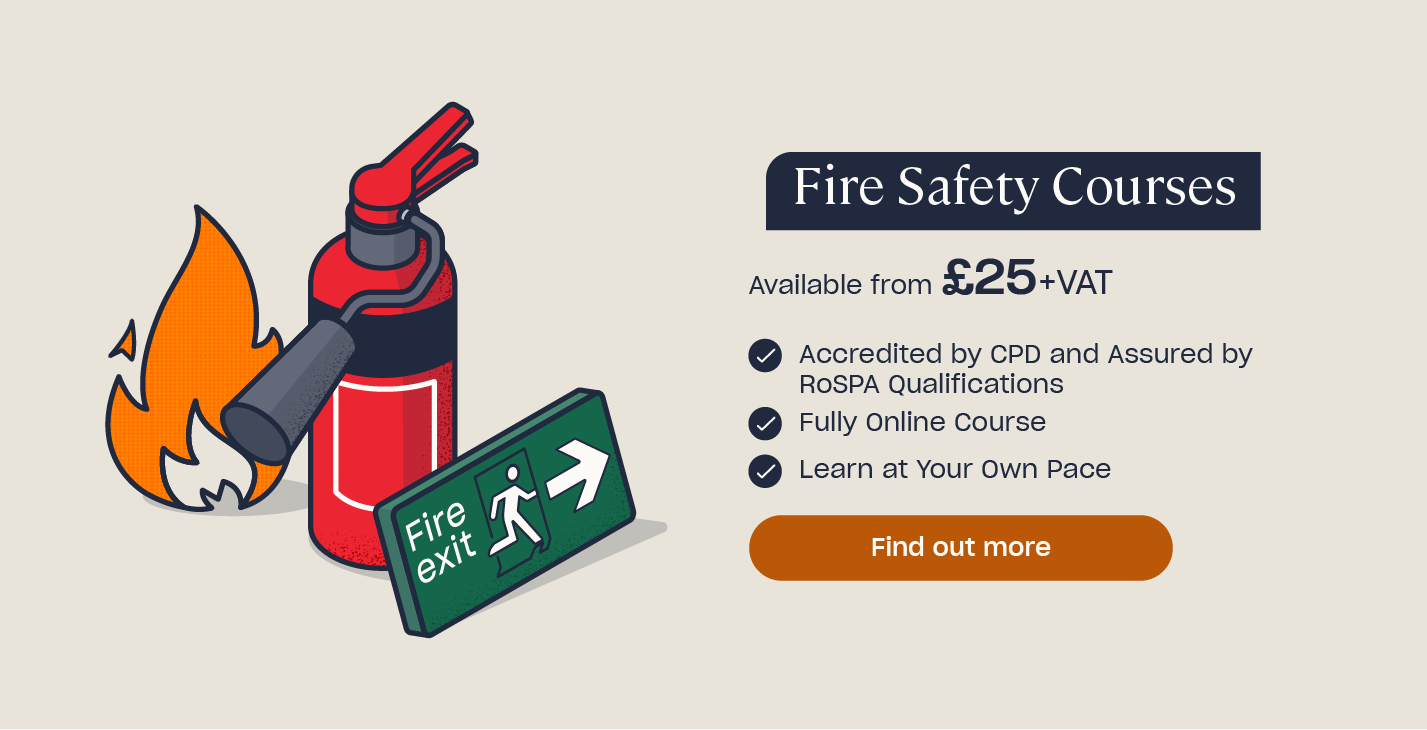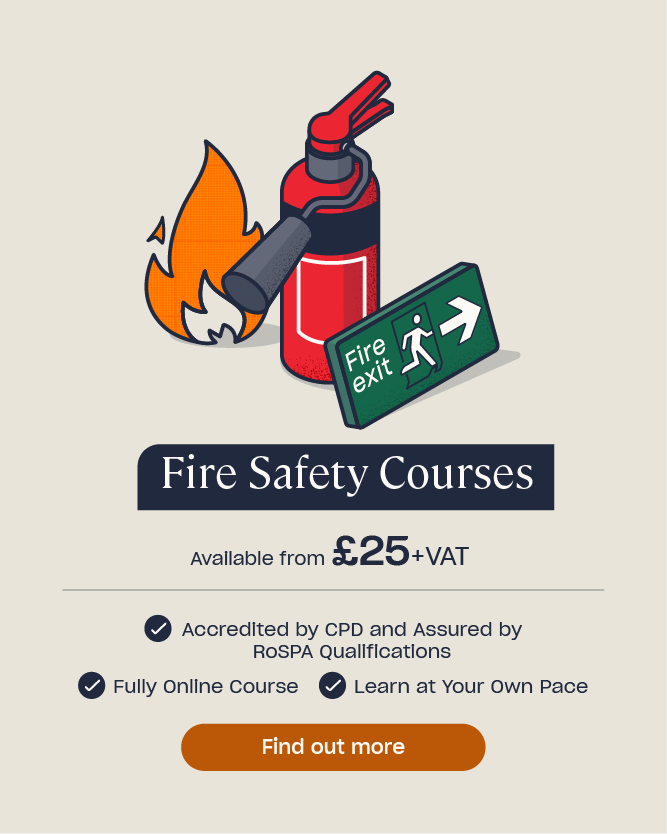Hotel Fire Safety Guide for Managers
The last thing your guests want is to hear the fire alarm and have to escape a building they’re unfamiliar with. It’s also the last thing you want. If a fire breaks out in your hotel, it puts dozens of people’s lives at risk (especially sleeping guests) and can damage your business irreparably.
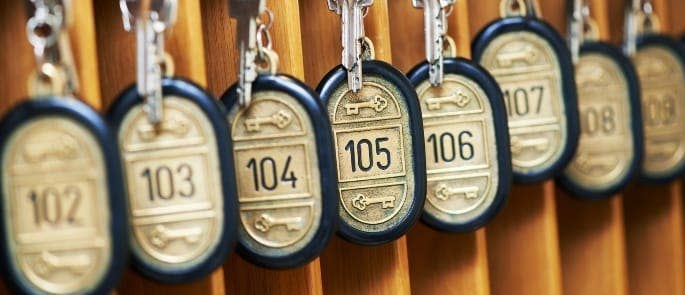
The Regulatory Reform (Fire Safety) Order 2005 requires you to assess fire risks in your hotel. You must implement adequate control measures to prevent fires from starting and enable people to evacuate safely if one does.
Fire kills, and it usually takes victims of negligence. But if you apply sufficient fire safety measures in your hotel, you can prevent tragedy.
Hotel Fire Safety Checklist
The Fire Safety Order sets out numerous duties that you must follow to make your hotel safe for guests. Be aware that enforcing authorities have the power to inspect your hotel at any time to check that you comply. If dissatisfied, they may issue a notice that requires you to improve safety measures and, in extreme cases, prohibit access until you make changes.
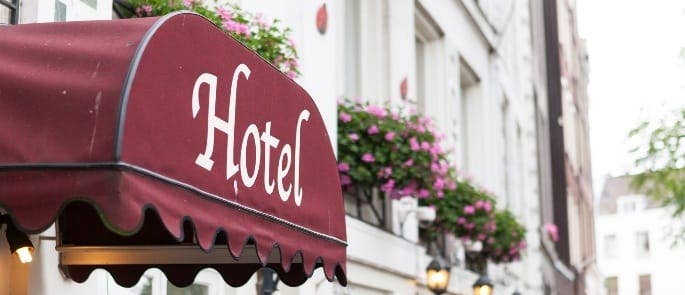
This guide to Fire Safety in Hotels is separated into the following topics:
- Carry out a fire risk assessment.
- Appoint fire wardens.
- Train staff.
- Install detection and alarm systems.
- Arrange maintenance and repairs.
- Plan fire routes.
- Plan your fire evacuation strategy.
- Provide information to guests.
Carry out a fire risk assessment
To do so, you need to complete five steps.
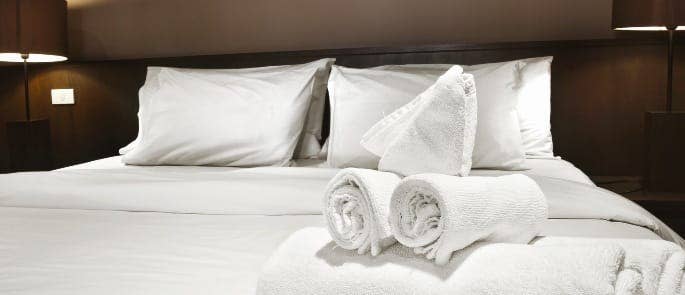
- Identify the hazards: think about the ways a fire could start (such as faulty plug sockets, damaged kitchen appliances, or obstructed ventilation) and sources of kindling (including furniture, laundry, paper, chemicals, wall hangings, etc.).
- Consider who is at risk: guests are your primary concern. They aren’t familiar with the building and may even be asleep when a fire occurs, which puts them at serious risk. You need to ensure that vulnerable people can escape safely, such as those with mobility or hearing disabilities.
- Determine what measures are needed and apply them: for example, you may need better housekeeping to move sources of kindling away from fire escape routes and may need to arrange regular checks for appliances and plugs. If you don’t have any disability escape routes on floors above ground level, install them.
- Record your findings and changes: enforcing authorities will check your records for evidence that you manage fire safety risks, so keep on top of writing everything down. Records help you track what you’ve done and what you still need to do, and enable you to look back and assess what control measures did or didn’t work.
- Review and update: business premises, particularly hotels, will wear down from use over time, meaning new hazards appear and control measures become less effective. So you need to reassess risks, reapply control measures, and rerecord details.
Are you responsible for ensuring your premises is up to code before it opens? Take a look at our online Fire Risk Assessment Training Course which has further detail on evacuation plans, prevention and detection.
Appoint fire wardens
You must appoint a competent person to take charge of fire safety prevention and evacuation procedures in your hotel. It can be yourself or someone else, but the person you assign must receive technical and practical fire safety training so they know how to prevent and fight fire.
Fire wardens are essential in a hotel. Guests aren’t familiar with the escape route and may depend entirely on someone to guide them in an emergency, especially if they were asleep, as they’ll likely feel disoriented. Your fire wardens should have a copy of the guest list and coordinate with fire rescue services if anyone fails to evacuate.
The number of fire wardens your business needs depends on numerous factors, including how many floors your hotel has, the size and complexity of its layout, the number of guests you accommodate, the number of shifts, and more. As a minimum, you should have one fire warden for every floor and on every shift. Also keep in mind holiday and sickness cover.
Train staff
Make sure employees know what to do if the alarm sounds – or how to sound an alarm themselves. Provide them with fire safety training that teaches hazard prevention methods, such as housekeeping, and how to spot and report issues.
Need a Course?
Our Fire Safety Training Course explains everyone’s legal responsibilities, the common causes of fires, how to prevent them, what fire safety arrangements are necessary, and the importance of following emergency procedures.
Internal training should familiarise staff (including part time and temporary staff) with fire exit routes and the assembly point. Everyone should know who the designated fire wardens are and when they’re on duty.
Install detection and alarm systems
All hotels must legally have fire detection and alarm systems in place. You should install plenty of manual call points in obvious locations, which enable staff or guests to easily activate them if they discover a fire. Check smoke detectors regularly – at least once a month – and test manual call points during working hours once a week.
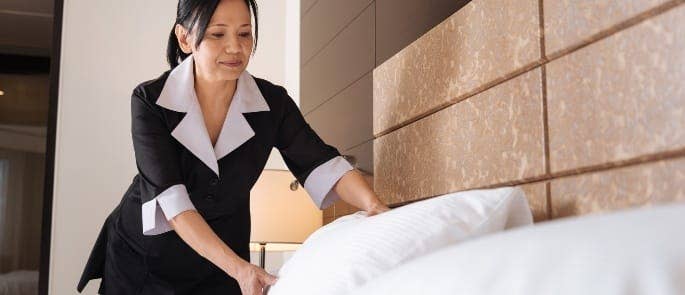
Consider whether you should use more than one form of fire alarm system, e.g. visual alarms, to alert people with hearing disabilities.
You need to also ensure alarms are loud enough to wake sleeping guests: alarms near the bed head should be around 75dB. It is absolutely vital that guests wake up immediately during a fire. People inhale smoke while asleep without noticing, which is often fatal if they don’t wake up in time.
Talk to your local Fire Service if you need further guidance.
Arrange maintenance and repairs
Either a competent person in the business or an external service engineer or contractor can check equipment and carry out repairs.
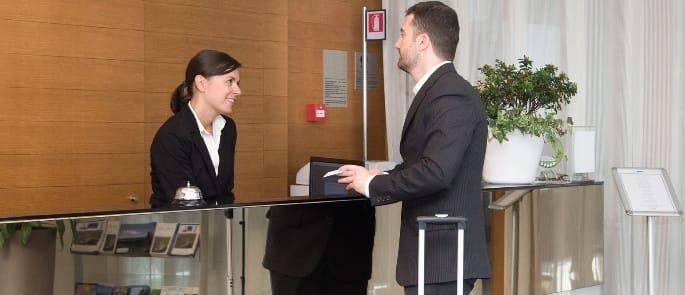
Examples of what they should check include:
- Fire doors, emergency lighting, and firefighting equipment.
- Kitchen appliances.
- Equipment in rooms.
- Plug sockets.
Keep records of maintenance and repairs. They act as proof of compliance and help you know when your equipment is next due for routine servicing. You should familiarise yourself with the manufacturer’s instructions for all your equipment, as they provide recommendations for how frequently you should carry out checks.
Plan fire routes
Escape routes should enable anyone to reach a place of safety during a fire, even if the fire blocks one of the escape paths. Therefore, you should have more than one route in place and should test each one regularly.
To make your fire escape routes effective, you should:
- Ensure they are constructed and enclosed by fire and smoke resistant materials.
- Install suitable emergency lighting and signs.
- Keep them free from obstructions.
- Ensure they have suitable access for people with disabilities.
- Install ventilators in stairwells to remove smoke from the atmosphere.
- Make sure everyone keeps fire doors closed to prevent smoke and fire from spreading.
Plan your fire evacuation strategy
Not all evacuation strategies are suitable for every type of building. This is particularly true for hotels, where the size and complexity often varies between premises.
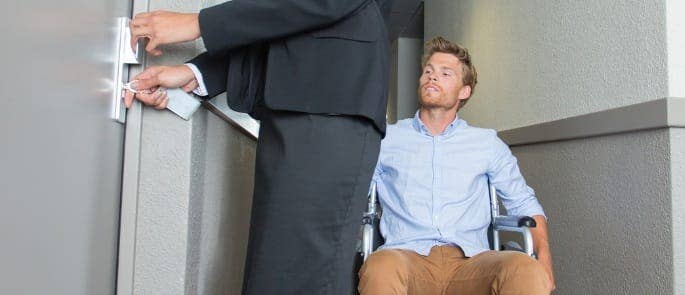
You’ll most likely implement one of two evacuation strategies:
- Simultaneous evacuation – if your hotel is small with a simple layout, the alarms can alert every room and floor at once and prompt people to evacuate at the same time.
- Vertical or horizontal phased evacuation – if your hotel accommodates a large number of guests, has multiple floors, and is complex in design, you need to sound an alarm and evacuate people in areas that are at immediate risk before others. So the floor where the fire is located (and those above it) would evacuate first, while you temporarily delay those below.
Your risk assessment will help you identify factors and decide what strategy you should use. Seek advice from your local Fire Service if you need further advice.
Provide information to guests
From the moment your guests arrive, they should know where to find fire escape routes and manual call points.
During check in, draw guests’ attention to fire safety notices around the premises and point out the main exits. Hand over information sheets or display them in each bedroom in an obvious location.

Fire safety information sheets for hotel guests should explain:
- What to do if they discover a fire or if the alarm sounds.
- The nearest fire exit route (consider including a floor plan).
- The location of the nearest assembly point.
- What guests should do during a fire depending on the time of day (e.g. at night they should wake everyone in the room and not stop to fully dress themselves).
If you provide a rundown of fire safety beforehand, guests are more likely to take prompt action when a fire alarm sounds. Plus, you demonstrate that you’re committed to protecting your guests, meaning they feel safe staying at your hotel.
What to Read Next:
- The Fire Safety Responsibilities of a Fire Warden
- Top 10 Fire Safety Tips in the Workplace
- Fire Safety Rules and Regulations in the Workplace
- Fire Safety Signs
- Creating a Fire Safety Evacuation Plan
- Fire Risk Assessment Quiz
- Fire Risk Assessment Template
- Fire Door Safety: What are the Requirements?


